| Recent Featured Videos and Articles | Eastern “Orthodoxy” Refuted | How To Avoid Sin | The Antichrist Identified! | What Fake Christians Get Wrong About Ephesians | Why So Many Can't Believe | “Magicians” Prove A Spiritual World Exists | Amazing Evidence For God | News Links |
| Vatican II “Catholic” Church Exposed | Steps To Convert | Outside The Church There Is No Salvation | E-Exchanges | The Holy Rosary | Padre Pio | Traditional Catholic Issues And Groups | Help Save Souls: Donate |  |

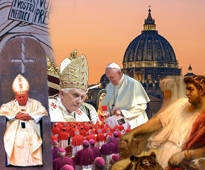
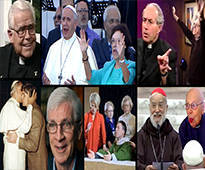
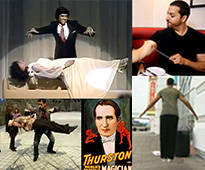
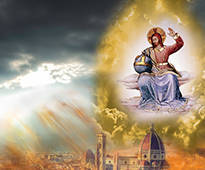

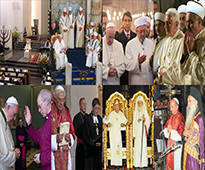


 " />
" />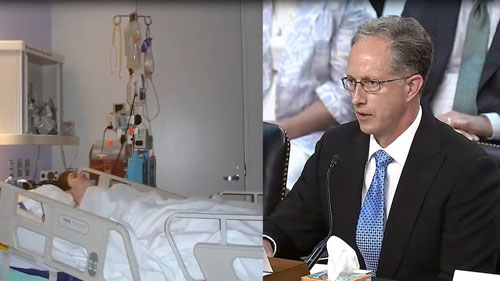 " />
" /> " />
" /> " />
" /> " />
" />




Sacred Scripture Against Invincible Ignorance - And The Evidence of The Immediate Dissemination of The Gospel throughout The World
The fact remains that God has revealed that all who wish to be saved must believe in the Catholic Faith (the Trinity and the Incarnation being “the Catholic Faith” in its simplest mysteries – see the Athanasian Creed). The fact that God will make sure that souls of good will hear His voice and receive the Catholic Faith should not be hard for a Catholic to accept. After all, in the Apostles’ Creed alone, Catholics are required to profess belief in numerous supernatural events: the Virgin Birth, the Resurrection and the Ascension. A Catholic is also required to believe in Sacred Scripture, which is filled with miracles and supernatural phenomena. Transubstantiation (the Real Presence of Christ in the Eucharist) is also an everyday miracle which Traditional Catholics believe. So why is it hard to believe that God removes ignorance from souls of good will no matter where they are, even miraculously, if necessary? The name of Jesus is the only name under all of heaven (Acts. 4:12) by which one can be saved; and those who enter in not by Jesus are thieves and robbers (John 10).
In a famous case, Ven. Mary of Agreda is said to have bilocated from her convent in Spain to the wilds of Texas in order to instruct Indians in the true Faith. “There is a large mural over the main entrance to the Cathedral of Ft. Worth depicting this lengthy visitation, as well as its huge original that hangs in the Church of St. Anne in Beaumont, Texas.”[2] Her miraculous bilocations to America are said to have occurred for 11 years (from 1620-1631), from Texas to New Mexico to Arizona, spanning over a thousand miles.
It is also taught in numerous places in the New Testament that the Gospel was, even in the time of the Apostles, preached throughout the entire world.
The New Testament is clear that the Gospel reached “the uttermost part of the earth” (Acts 1), “all the creation which is under heaven” (Colossians 1) and “unto the ends of the whole earth” (Romans 10). It is quite possible that the Apostles were transported to the “uttermost part of the earth” to preach the Gospel and baptize in the same vessel by which the prophet Elias was miraculously taken from the earth – a fiery chariot.
In fact, we know that St. Philip the Apostle was transported in a manner similar to Elias, after Philip baptized the Eunuch of Candace.
Acts 2 also tells us that on the day of Pentecost, Jews from “every nation under heaven” (who had come to Jerusalem for the day of Pentecost) were converted and baptized.
Once these souls from “every nation under heaven” had been converted and baptized, they traveled back to their respective lands and spread the Gospel – facilitating the immediate dissemination of the Gospel to distant lands throughout the world. That is why, for example, there is evidence of Christianity in Parthia that is contemporaneous with the earliest Western contacts in that realm after Christ.
Since these souls had been converted in a powerful manner, “astonished” (Acts. 2:12) – fear having “come upon every soul: many wonders also and signs were done by the apostles in Jerusalem, and there was great fear in all” (Acts 2:43) – they became zealous missionary instruments God immediately used to spread the Faith and baptize in their distant homelands. And this doesn’t even include the missionary work that the Apostles themselves did in the distant lands outside the Roman Empire. St. Andrew, for instance, preached as far as the Ukraine.[4]
Andrew – preached in Scythia (barbarian Ukraine) and perhaps Greece
Bartholomew – preached in south Arabia (and perhaps India)
Jude Thaddeus – preached in Mesopotamia (and perhaps Armenia and Iran)
Matthew – Media or Ethopia
Matthias – entirely unknown
Philip – Asia Minor (Phrygia)
Simon the Zealous – Iran
Thomas – Parthia and India[5]
This is why the celebrated Church fathers St. Justin Martyr (quoted above), St. Irenaeus, St. Clement and many others write:
We also know that the Holy Ghost specifically forbade the Apostles to preach the Gospel in certain places, most probably because of the bad will that they would encounter.
On the other hand, we know that the Holy Ghost specifically directed the Apostles – by way of supernatural inspiration – to preach the Gospel in places where there were sincere souls in need of it, such as in Macedonia.
None of this is to suggest, of course, that one should not preach the Gospel to a person without supernatural inspiration. It is merely to illustrate that God is fully aware of the souls of good will and the souls of bad will; He is fully aware of who is truly desirous of the truth of the Gospel and who is not, and there is nothing stopping Him from getting His truth to those who are sincere. The Lord will add daily to the Church those who are to be saved!
St. Paul further says that men (i.e., men above reason who wish to be saved) cannot have the faith in Christ which is necessary for salvation if they have not heard of Him. “Or how shall they believe in him, of whom they have not heard?” (Romans 10). Since all above the age of reason must hear the word of Christ to have the Faith (Romans 10), they must hear the word of Christ to have salvation, because no one is justified without Faith – the one true Catholic Faith.
The fact that no one can be saved without the Catholic Faith is surely why there is evidence of Christianity’s arrival in the New World long before Christopher Columbus ever discovered it. St. Brendan the Navigator (484-577 A.D.) is reported to have made travels across the Atlantic long before Christopher Columbus,[11] and there is archeological evidence that has been unearthed to support this claim.
The fifteenth and sixteenth century Catholic conquistadors of North and South America, who also overthrew the satanic Aztec Empire, found an abundance of evidence of the ancient presence of Christianity in the New World.
Evidence has now been uncovered that Christianity reached China as early as the 1st or 2nd century. “A Chinese theology professor says the first Christmas is depicted in the stone relief from the Eastern Han Dynasty (AD 25-220). In the picture… a woman and a man are sitting around what looks like a manger, with allegedly ‘the three wise men’ approaching from the left side, holding gifts, ‘the shepherd’ following them, and ‘the assassins’ queued up, kneeling, on the right.”[13] In fact, both St. Francis Xavier (1506-52) and Fr. Matteo Ricci (1552-1610), two of the most influential missionaries from the Society of Jesus, “claimed in their writings that they found evidence supporting that Thomas had made his way to China successfully.”[14]
Thus, by these four means was the Gospel transmitted even to the ends of the earth during the period of Jesus Christ’s revelation – i.e. the period whose end is officially marked with the death of the last apostle: 1) the preaching of the Apostles which covered the entire Roman Empire and vast areas outside of it, and the preaching of the multitudes converted by them; 2) the preaching of all those converted on Pentecost, who carried the Gospel back to their distant lands; 3) the possible miraculous transportation of Apostles to distant lands where good willed souls were to be found, just as Philip was transported away from the eunuch (Acts 8); 4) the direct supernatural intervention of God telling people what they need to believe and do to be converted to the Christian Faith to be saved. We see this direct supernatural intervention of God to instruct souls of good will in the case of Cornelius and St. Paul:
We must also keep in mind a fifth very important factor, which sheds further light on this issue: the teaching of Christ is that the overwhelming majority of mankind is of bad will and therefore damned. Jesus revealed that few find the path to salvation in Matthew 7:13, and the great spiritual teachers of the Catholic Church have taught that not only is most of humanity lost (i.e., all who die as non-Catholics), but even most of those who profess to be Catholic.
Since the sad fact of human history is that few are of the truth – something that is also discovered by reading the Old Testament and the stories about how few were found worthy to enter the promised land, and how few remained faithful to God’s law in proportion to the super-majority of even God’s people who repeatedly fell into idolatry – this helps explain why God leaves segments of Earth’s population in ignorance. It’s because there is not a good-willed soul to be found there. Thus, those parts of the New World which were not reached by the Gospel were not reached because the elect were not to be found there.
The words of the New Testament about the Gospel being preached in all creation under heaven, and Our Lord’s words that the Apostles would witness to Him in “the uttermost part of the earth” in His very last discourse before His Ascension, suggest that perhaps some of the Apostles themselves were miraculously transported to areas in the world where souls of good will were to be found. But regardless of what one takes from the scriptural passages above, the fact is that the Gospel is preached where good willed souls are to be found, and where it is not preached there is no salvation.
[1] Jurgens, The Faith of the Early Fathers, Vol. 1: 144a.
[2] Michael Malone, The Only-Begotten, p. 329.
[3] Warren H. Carroll, A History of Christendom, Christendom Press, Vol. 1 (The Founding of Christendom), p. 429, note 9.
[4] Warren H. Carroll, A History of Christendom, Vol. 1 (The Founding of Christendom), p. 435, note 47.
[5] Warren H. Carroll, A History of Christendom Vol. 1 (The Founding of Christendom), p. 406.
[6] Warren H. Carroll, A History of Christendom, Vol. 1(The Founding of Christendom), p. 406.
[7] Jurgens, The Faith of the Early Fathers, Vol. 1: 191-192.
[8] Jurgens, The Faith of the Early Fathers, Vol. 1: 405.
[9] Denzinger 1793.
[10] Denzinger 1000.
[11] The Catholic Encyclopedia, “Brendan,” Volume 2, 1907, p. 758.
[12] Francis Anson, Guadalupe: What Her Eyes Say, Manila: Sinag-tila Publishers, Inc., 1994, p. 62.
[13] Wang Shanshan, “Stones Indicate earlier Christian Link?”, China Daily, http://www2.chinadaily.com.cn/english/doc/2005-12/22/content_505587.htm
[14] http://www2.chinadaily.com.cn/english/doc/2005-12/22/content_505587_4.htm
[15] Jurgens, The Faith of the Early Fathers, Vol. 1: 320a.
[16] St. Louis De Montfort, The Secret of the Rosary, Tan Books, p. 65.
Sign up for our free e-mail list to see future vaticancatholic.com videos and articles.
Recent Content
^